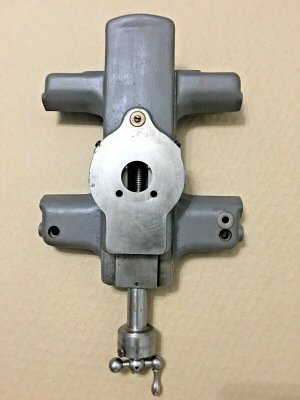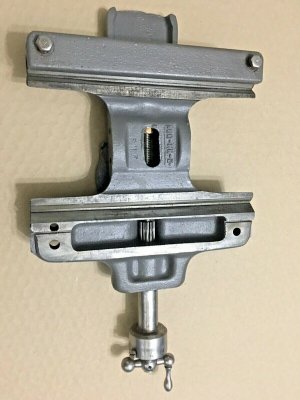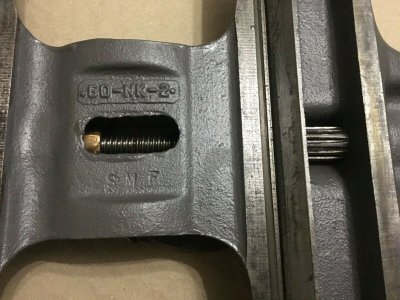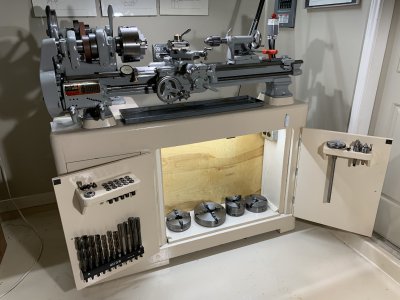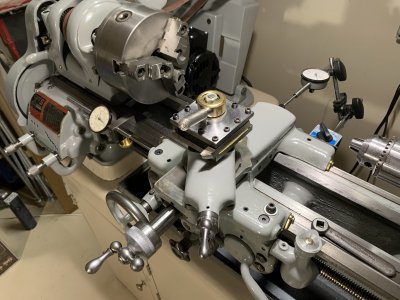There is a screw at the front that is labeled oil.
Just like the one on the middle step pulley of the head stock.
With all due respect Jim, the tiny hole at the front of the casting is for oiling the CS crank mechanism shaft. There is no possible way that oil at that hole can travel the full 6" where the CS nut is. The oil hole at the step pulley is a different mechanism, and indeed, oil is delivered to the step cones. Look at the photo below with all the fine threads....you think oil is going to traverse 6 inches to the CS thread and nut? No sir, it won't.
Another fact is that on SB lathes larger than the 9's and 10's, there is a hollow bolt right above the CS nut for the specific reason of providing lubrication where the two threads interact. So why not for the 9's and 10"s?
Below are photos of the saddle assembly showing the exposed CS thread. Note that from the top, an owner has to completely remove the compound rest in order to oil the ACME thread, and it's still two inches from the nut. The threads are also exposed on the bottom, however, to oil here, a person would have to squirt through the bottom of the bed and through the webs into a small opening in the casting. How likely is either of those scenarios going to happen for the average user?
No, the most likely is that South Bend either forgot about a hole in the bottom of the CS nut, or didn't deem it important enough.
As a result, many hundreds of people have replaced the original CS nuts that have pre-maturely worn the ACME thread, with non-drilled
reproductions that continue to wear the CS ACME thread. And all it takes is a tiny 1/8th inch hole at the bottom of the nut to deliver
much needed lubrication to meshing threads that are VITAL to the accuracy of the lathe. I don't think that's too much to ask for
an avid SB lathe owner to consider. Think about it, sir.
With All Due Respect
PMc




